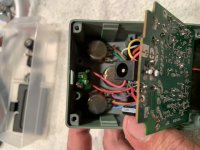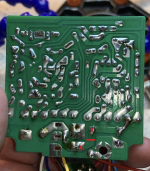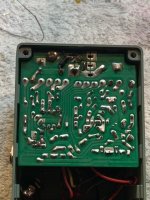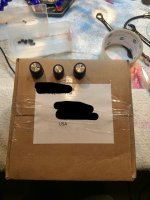Dear experts,
I got my hand on a busted TS9, and offered a friend to troubleshoot the issue. Long story short, he inserted a 12v reverse polarity adaptor, saw or smelled the smoke and voila.
Remotely, we had identified that the reverse polarity/voltage regulator diode had broken in half, D8 in the following diagram.
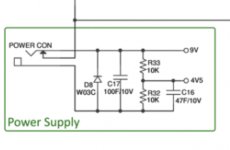
My friend replace it with a 1N5819, I know that it’s not the same as a W30C, and will not act as voltage regulator, but that should not impact the circuit.
A few picture of what I’m working with followed my my actions.
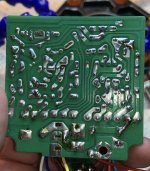
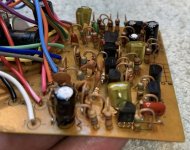
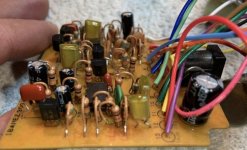
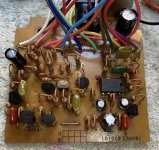
Through visual inspection I noticed that the 100u (C17) cap was blown and for good measure also replaced the 47u (C16) cap.
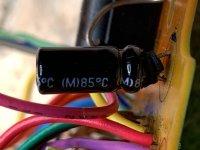
I also notices some white residue between a cap and a resistor:
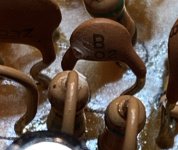
So I replaced the cap, but not the resistor…
Current state:
- works in bypass
- Switch works, I see a very faint red in the LED, reading a voltage of only 1.78V. I tested the LED at 9V and it shine bright.
- IC readings with the switch on:
1: 0.8v
2: 0.77v
3: 3.34v
4: 0v
5: 1.03v
6: 0.93v
7: 0.92v
8: 9.06v
- When engaged, the pedal only produce white noise that seem affected by the Level and Drive pots.
So now I can’t see anything suspicious visually to replace and not knowing the board, find it hard to audio probe.
Any suggestions ?
I got my hand on a busted TS9, and offered a friend to troubleshoot the issue. Long story short, he inserted a 12v reverse polarity adaptor, saw or smelled the smoke and voila.
Remotely, we had identified that the reverse polarity/voltage regulator diode had broken in half, D8 in the following diagram.

My friend replace it with a 1N5819, I know that it’s not the same as a W30C, and will not act as voltage regulator, but that should not impact the circuit.
A few picture of what I’m working with followed my my actions.




Through visual inspection I noticed that the 100u (C17) cap was blown and for good measure also replaced the 47u (C16) cap.

I also notices some white residue between a cap and a resistor:

So I replaced the cap, but not the resistor…
Current state:
- works in bypass
- Switch works, I see a very faint red in the LED, reading a voltage of only 1.78V. I tested the LED at 9V and it shine bright.
- IC readings with the switch on:
1: 0.8v
2: 0.77v
3: 3.34v
4: 0v
5: 1.03v
6: 0.93v
7: 0.92v
8: 9.06v
- When engaged, the pedal only produce white noise that seem affected by the Level and Drive pots.
So now I can’t see anything suspicious visually to replace and not knowing the board, find it hard to audio probe.
Any suggestions ?


